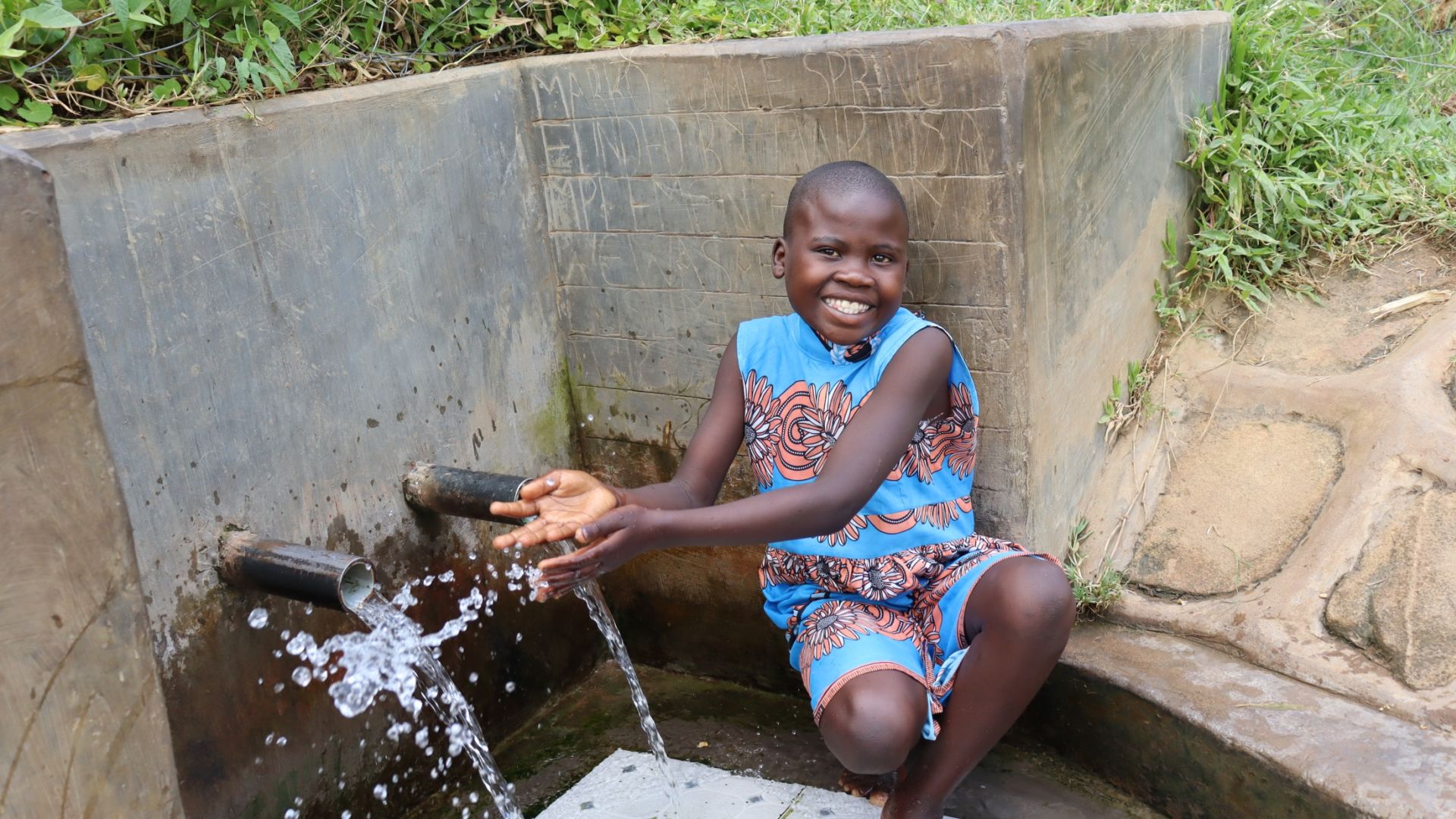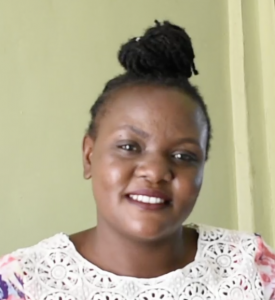The Khainga Community, comprising of 490 people, faces difficulty in accessing safe drinking water. Despite having ample supply from their spring, the community members endanger their health every time they consume the water.

"The water looks clear, but it is not safe to drink," said field officer Adelaide Nasimiyu.
"This spring was protected [a] long time ago by the community members. They came together, formed a committee, contributed some money, and constructed the spring. Due to [the] lack of funds to repair the spring, it broke down. The backfill area is not well covered, causing contamination [of] the drinking water. If this water point can be repaired or protected, [it] can save a lot [of] the people of Khainga Community from consuming contaminated water," Adelaide continued.
Community members report suffering from water-related illnesses like stomachache, diarrhea, and typhoid, which leave them feeling miserable but also require them to use much-needed resources to seek medical treatment instead of making progress in their daily lives.
"This spring has been serving us for many years since I got married in this community. During the early days, we never used to treat it because it was safe for us to drink, but as the days [went] by, the water has become unsafe for us to drink the way it is. I remember before we started treating our water, the whole family became sick. The adults and young ones had diarrhea, vomiting, and stomach aches. The doctor said that it was because of the water we drank. We were treated and became well and healthy. That made us start treating our drinking water by boiling and using chlorine," said 61-year-old farmer Sarah Khamati (seen below).

Although community members did their best to protect the spring, there are some systemic issues that need to be remedied. The water filtration can not be trusted, the spring box floor is crumbling, the walls surrounding the collection pipes are covered in algae, and access is difficult.
"The access is a challenge because of the broken stairway. One has to be extra careful while carrying the water from the spring. There are many accidents of falls that have been reported," said Adelaide.

"I usually fetch water before going to school. I really do not like going to fetch water because accessing the spring is difficult. Sometimes when it rains the previous night, it makes the access to the spring so slippery. Sometimes you might slip and fall with the fetched water. The times I have fallen with water, I [have been] late going to school. At school, the teacher on duty will always say it is a lame excuse, and for that, you're being punished," shared 11-year-old Baron M., above collecting water from the spring.
Protecting the spring will enable the community members in Khainga to safely and efficiently collect water that they know they can trust. Then people like Sarah and Baron can focus on the other important things in their lives that matter to them instead of worrying about the water they consume stealing their resources or impeding their progress.
The Proposed Solution, Determined Together...
At The Water Project, everyone has a part in conversations and solutions. We operate in transparency, believing it benefits everyone. We expect reliability from one another as well as our water solutions. Everyone involved makes this possible through hard work and dedication.
In a joint discovery process, community members determine their most advantageous water solution alongside our technical experts. Read more specifics about this solution on the What We're Building tab of this project page. Then, community members lend their support by collecting needed construction materials (sometimes for months ahead of time!), providing labor alongside our artisans, sheltering and feeding the builders, and supplying additional resources.
Water Access for Everyone
This water project is one piece in a large puzzle. In Kenya, Sierra Leone, and Uganda, we're working toward complete coverage of reliable, maintained water sources that guarantee public access now and in the future within a 30-minute round trip for each community, household, school, and health center. One day, we hope to report that this has been achieved!
Training on Health, Hygiene & More
With the community's input, we've identified topics where training will increase positive health outcomes at personal, household, and community levels. We'll coordinate with them to find the best training date. Some examples of what we train communities on are:
- Improved hygiene, health, and sanitation habits
- Safe water handling, storage & treatment
- Disease prevention and proper handwashing
- Income-generation
- Community leadership, governance, & election of a water committee
- Operation and maintenance of the water point
Chlorine Dispensers
Installing chlorine dispensers is an important piece of our spring protection projects. Protecting a spring provides community members with an improved water source, but it doesn’t prevent contamination once the water is collected and stored. For example, if the water is clean and the container is dirty, the water will become contaminated.
We ensure that each chlorine dispenser is filled with diluted chlorine on a consistent schedule so that people can add pre-measured drops to each container of water they collect. That way, community members can feel even more confident in the quality of their water.






 Protected Spring
Protected Spring
 Rehabilitation Project
Rehabilitation Project
































